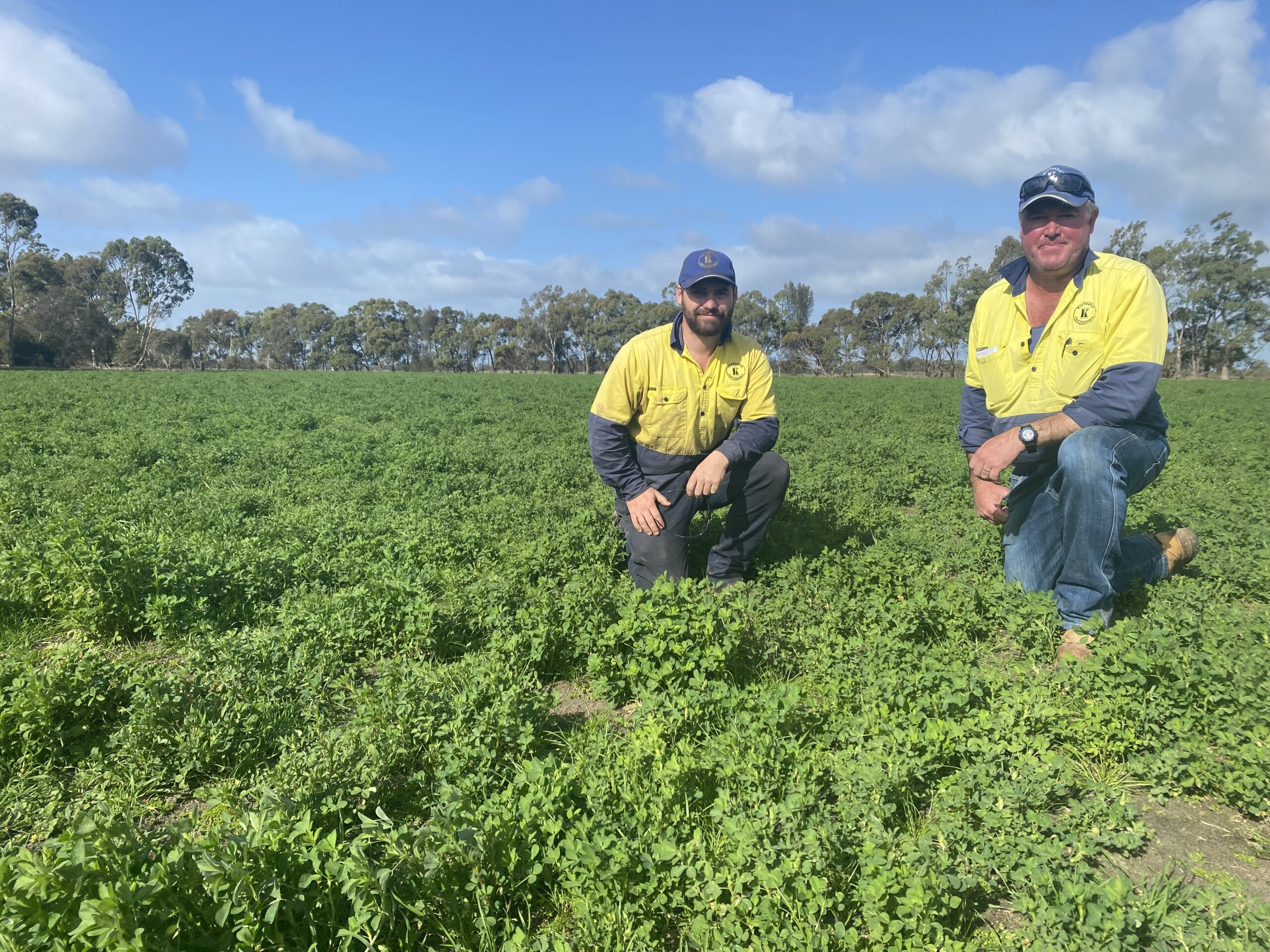Lucerne production is an industry that’s helping transform the farming landscape on many properties in southeast South Australia and for the Kinyerrie Partnership, it’s become all about growing top quality lucerne stands.
The Kinyerrie Partnership is a lucerne seed, premium hay and livestock operation. It extends across 2,200ha, 10km West of Keith and typically runs 2,000 terminal ewes that lamb in March. The enterprise produces lucerne pastures and hay, for both internal use and off-farm sales.

Mark Wilson took over the farm manager role a few years ago and explains the property has a mix of irrigated and dry land lucerne, grown mostly on a sandy loam which suits lucerne production. Rainfall for their area averages about 475mm.
“We have 530ha under centre pivot, 70 ha under flood irrigation and we grow a range of different lucerne varieties,” Mark said.
“Our primary business is lucerne seed with value adding through hay and pasture. What we like to grow are multi-purpose varieties that are great for forage and hay production. There are some good ones out there like the Seed Force variety SF 614 QL
“614 started well before my time here. It has been grown on this property for about seven years. Over that time, it’s proven to be a really good forage variety, due to its multi-foliate trait.
“Great for its ability to bounce back after grazing, a lot of our non-irrigated pastures have been sown down to it. SF 614 QL responds well to grazing and comes back quickly.
“We also have a 37ha paddock, of which 30 ha is under centre pivot irrigation sown to it as well. It’s been a productive stand and lived on for a long time.
“How long the sheep go in there can depend on what we are doing at the time. For example, lambs might be in there for 3 or 4 weeks before we move them on to the next pivot. The ewes also get rotated in there for 3 to 4 week intervals.
“During late winter we had just over 400 fast growing prime lambs in there for about 4 weeks before I pulled them out. As part of our rotational management, we don’t let any paddocks get to the stage where they’re completely grazed out. We’ll feed hay as necessary, just to give the sheep a bit of extra roughage.
“SF 614 QL is a variety which produces a lot of fodder. When it is up to 15 to 20cm high and has plenty of leaf in amongst it, it’s time to graze.
“There’s plenty of bulk in the foliage because of the growth characteristics of the plant. The SF 614 QL has a high leaf to stem ratio.”
Mark said their lucerne paddocks normally receive 100kg/ha of single superphosphate and trace elements annually. The trace elements are generally applied through the boom.
Areas destined to have multiple hay cuts will also get a good rate of potash.
Centre pivot areas are generally cut for high quality hay and non-irrigated pasture paddocks are typically used for forage.
Everything gets winter cleaned with selective herbicides to remove unwanted, low value weeds.
“We are in touch with our agronomist regularly and keep an eye on it. If it looks like needing something, we get straight onto it,” Mark said.